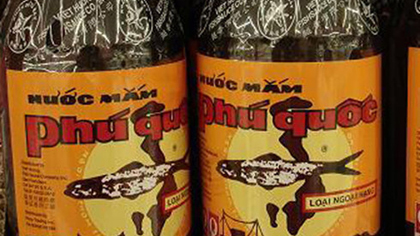Vietnam farmers, consumers stand to benefit from GI tagging
A good place to start in developing an understanding of a geographical indicator (GI) is to recognize that for all practical purposes it is simply a trademark, said experts at a recent conference in Hanoi.
Trademarks are ubiquitous in the business world, serving as indicators of a specific source of goods or services to which they are applied. Products the likes of Vinamilk, Vietnam Airlines, Samsung, Kentucky Fried Chicken and Coca-Cola are all fixed in the public's mind as goods that come from a specific source.
 |
Trademark laws protect consumers by identifying the source of the goods. If a consumer values a certain brand they can utilize the brand’s trademark to identify the goods that they want to purchase.
Additionally, trademark laws protect consumers by indicating quality. In the consumer's mind, each trademark represents a certain level of quality expected from all goods bearing the same trademark.
Lastly, trademark laws protect the huge investment dollars that companies spend in branding or creating the goodwill among consumers for their trademarked goods and services.
Trademark laws grant trademark owners the right to stop unauthorized use of the trademark by other companies as well as prevent them from using confusingly similar trademarks.
Without such protections, consumers might mistakenly purchase goods they do not want and the trademark owner’s reputation could be damaged by the presence of similarly marked, lower quality goods selling on the market.
A GI tag is virtually identical to a trademark where a product is named after the geographical region it comes from. The EU, said the speakers, has instituted laws that protect three classes of geographical indicators.
The first class is protected geographical indication (PGI) (which covers agricultural products and foodstuffs closely linked to the geographical area). The second class is protected designation of origin (PDO) and the third is traditional specialty guaranteed (TSG).
A speaker from the Ministry of Science and Technology said the EU currently has agreed to protect 39 GIs of Vietnamese goods once the Vietnam-EU Free Trade Agreement (EVFTA) comes into existence.
All the protected GI tags fall into the PGI category and relate principally to agriculture and food commodities such as fruit and vegetables while a more limited number are applicable to industrial and seafood products.
Two specific examples cited at the conference were the Cao Phong Orange of Hoa Binh Province and Dien Bien Rice. Although they both have been accorded GI protection from the Vietnam Government, the GI is not currently enforceable in the EU.
Consequently, the Cao Phong Orange and Dien Bien Rice suffer from ongoing unhealthy competition and counterfeiting in the EU market, said Nguyen Quoc Thinh, a lecturer from Hanoi Commerce University.
Mr Thinh suggested that more Vietnamese farmers and other companies in the agri-food segment of the economy seriously consider registering for GI tags for their products.
GI tags are invaluable, he noted, and registering them will reap the trademark holders, tremendous benefits when the Vietnam-EU free trade agreement comes into effect as early as 2018.
(Source: VOV)
 về đầu trang
về đầu trang






